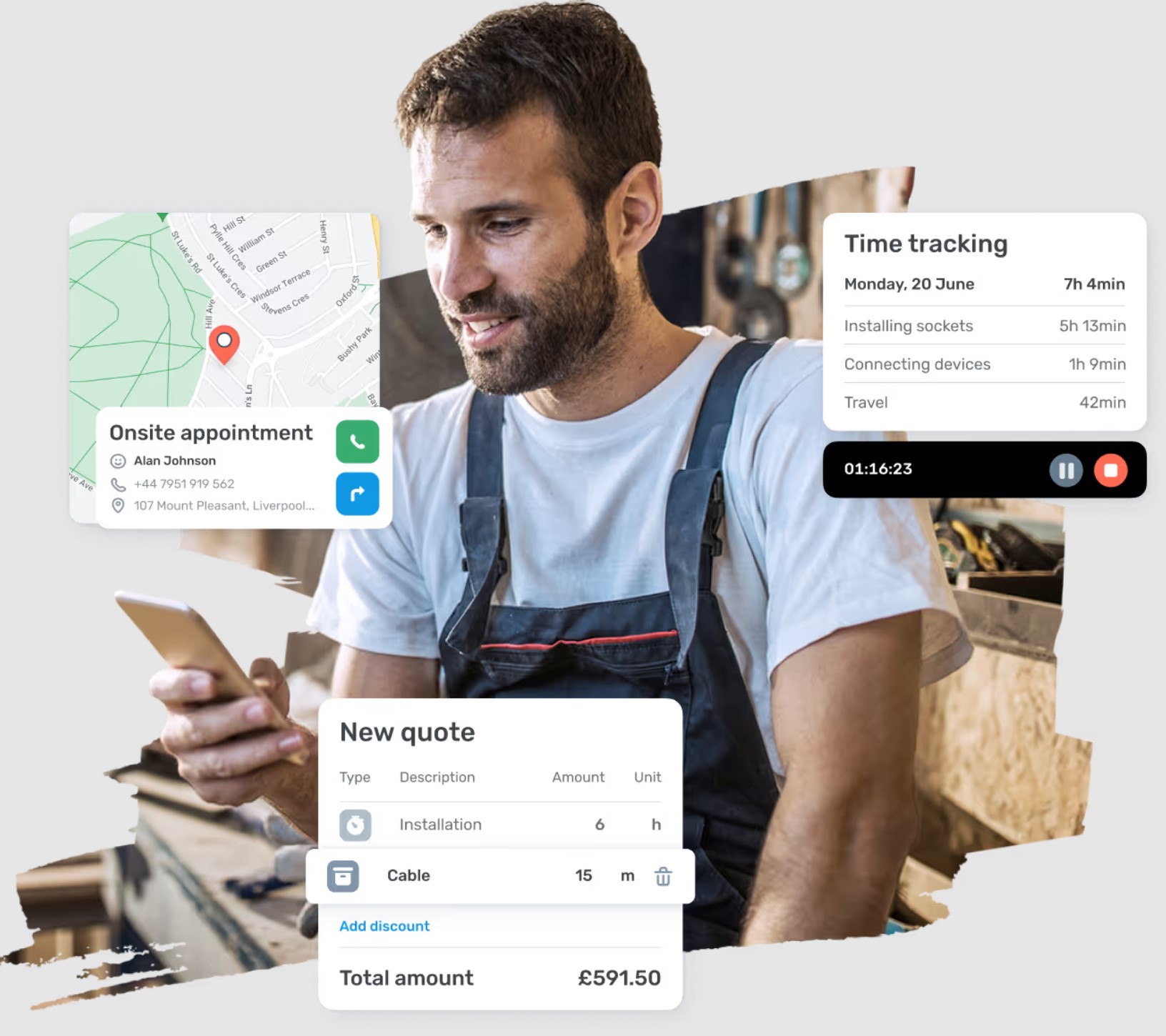CRM To Boost Business
Ab Initio’s Rhonda Ridge looks at what the market holds in 2025 and explains how an integrated CRM will help them to win sales in a highly...
Read Full Article
As financial constraints grow, consumer expectations evolve and technology has a greater impact, there’s a lot for tradespeople to think about, writes Marius Stäcker, CEO of job management software ToolTime.
There is a growing issue of unpaid invoices within the sector, with tradespeople across the UK owed an average of nearly £4,000, raising serious concerns about financial stability. And the trade sector continues to grapple with talent shortages, inflation, escalating tool theft, increased taxes, and persistent worker lost days. The situation is made all the more challenging by customers that don’t pay on time or who are putting off spending because of their own financial worries.
Against this backdrop, it’s important to look at how to do more with what you have. By boosting back-office efficiency and operational productivity you can make the best of all the things you can’t control with what you can.
End the chaos
Outdated manual processes lead to inefficiencies and wasted time, yet by investing in back-office modernisation it’s possible to bring order to chaos, save time on paperwork and make day-to-day business management a breeze.
Streamlining operations not only protects the bottom line, but creates time and resources for reinvestment in growth areas, such as pursuing new leads, expanding services or improving customer experiences. What’s more, the centralisation and automation of administrative tasks can deliver valuable data-driven insights to significantly reduce costs and improve productivity.
Better customer relations
No trade business can afford to let standards slip when it comes to customer experience. As customers increasingly demand instant communication and transparency and reviews and customer satisfaction metrics carry more weight in a digital, social media-led world, reliability and professionalism can make the difference between winning and losing business.
CRM
By tightening sales processes and ensuring that all leads are followed up, you can make sure pipelines are as productive as possible. Trades that harness software solutions to focus on customer relationship management and automate workflows will reap the rewards of faster response times, real-time updates and improved efficiency for a better customer experience. By consolidating and centralising everything from diary management to quotes, invoicing, job notes and time tracking, you can save admin time and focus on what matters the most – doing a good job for existing and prospective customers to help build and maintain a strong reputation.
The growth of on-demand and subscription service models
The rise of on-demand platforms such as Uber has transformed consumer expectations for services, with customers increasingly expecting tradespeople to offer rapid, on-demand scheduling options. Moreover, with many more subscription-led services on offer, their convenience and predictability is becoming the norm amongst consumers, while also offering the benefit of recurring revenue for certain trades.
For tradespeople that have businesses well suited to being positioned as a regular ‘service’ – for installers that might be maintenance or scheduling different home improvements – it will be crucial to ensure that back office systems make easy work of the administrative aspect including scheduling systems offering dynamic job allocation features that accommodate faster appointment scheduling to recurring billing, automated reminders, and service tracking.
HR takes centre stage
Skilled labour shortages will remain a challenge in 2025, while rising payroll expenses will place strain on margins. In the face of these issues, it will be important for trades to streamline operations with existing staff and focus on retaining existing skilled workers. We’ll also see increasing reliance on subcontractors to handle fluctuating demand without the full cost of permanent employees.
This will result in a greater focus on productivity to maximise the value of each employee and ensure optimal ROI on temporary team members. Achieving full visibility on what teams are working on and the time spent will be key, as well as streamlining communications to ensure everyone has what they need when they need it to get the job done. Ensuring thorough job documentation from subcontractors will be key for accountability and customer satisfaction.
Attracting a new generation
The number of young people entering skilled trade professions through apprenticeships, entry-level roles and work experience opportunities will increase in the coming years.
Amidst rising university tuition fees and the ongoing cost-of-living crisis, the Labour government’s apprenticeship reforms – which include a £60m initiative to fund up to 20,000 new apprenticeships – are making trade apprenticeships an increasingly appealing alternative to traditional higher education, offering hands-on industry experience and training while earning a wage.
‘Grow your own’ apprentices can provide great value and adaptability for trade businesses but only if you have the time to invest in training them effectively and the processes in place to make the most of the extra labour, from effective diary management to centralised job notes and time tracking systems.
But if you can create that time and space to invest in the next generation, these efforts will lay the groundwork for a more robust workforce pipeline, helping address the ongoing skills shortages we face.
The rise of hybrid teams
As connectivity and communication platforms continue to improve, remote consultations and hybrid work models will start to replace in-person quotation appointments. Video consultation scheduling and remote diagnosis capabilities will become an important means for trades businesses to assess customer requirements while saving time and effort.
Picture: ToolTime job management software will help you solve some but not all of the challenges raised in this article.
Article written by Marius Stäcker
15th January 2025